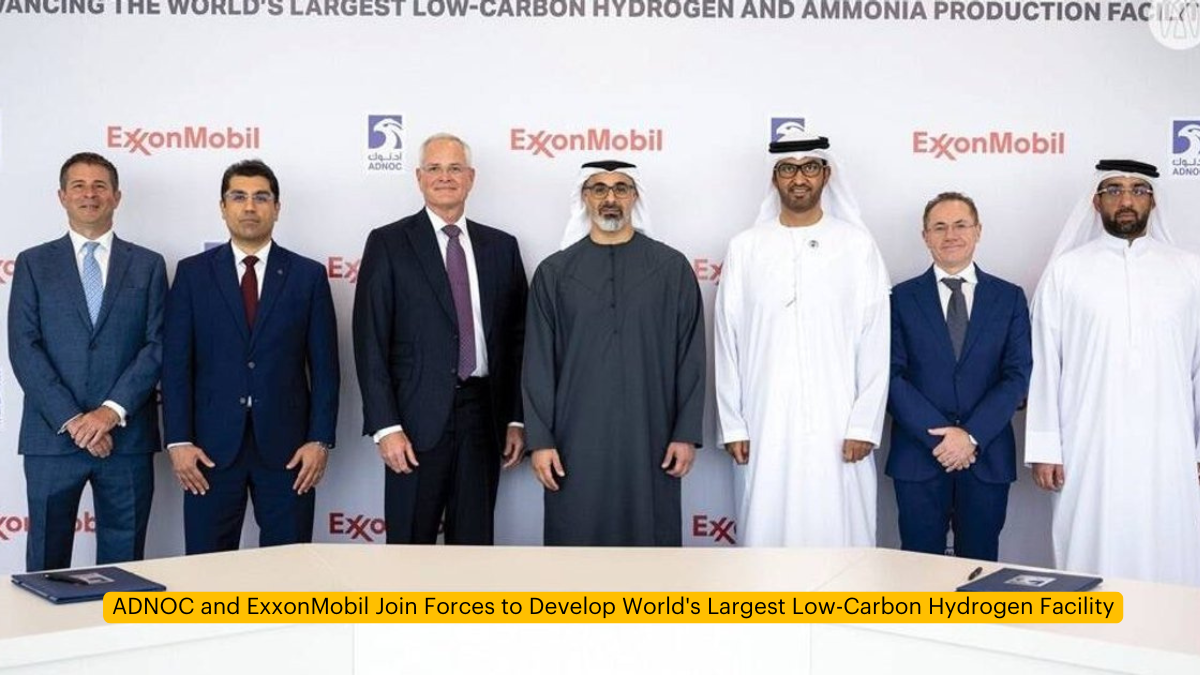Abu Dhabi National Oil Company (ADNOC) and ExxonMobil have announced a landmark partnership to develop the world’s largest low-carbon hydrogen facility. This ambitious project, set to be located in Baytown, Texas, marks a significant milestone in the race to lead sustainable energy production and combat climate change.
Project Overview and Significance
Strategic Location and Ownership
The facility will be situated in Baytown, Texas, leveraging the region’s abundant natural gas resources and existing infrastructure. Under the terms of the agreement, ADNOC will acquire a 35% equity stake in the project, demonstrating its commitment to diversifying its energy portfolio and expanding its global footprint in the low-carbon energy sector.
Unprecedented Scale and Production Capacity
Once operational, the facility is expected to set new benchmarks in clean hydrogen production:
- Daily production capacity of up to 1 billion cubic feet of low-carbon hydrogen
- Annual production of more than 1 million tonnes of low-carbon ammonia
These figures position the project as the largest of its kind globally, underlining its potential to significantly impact the emerging low-carbon hydrogen market.
Technological Innovation and Environmental Impact
Advanced Carbon Capture and Storage
At the heart of the facility’s operations lies cutting-edge carbon capture and storage technology. This innovative approach will enable the conversion of U.S.-produced natural gas into virtually carbon-free hydrogen by removing approximately 98% of the associated CO2 emissions. This remarkable feat of engineering underscores the project’s potential to revolutionize clean energy production.
Decarbonizing Hard-to-Abate Sectors
The production of low-carbon hydrogen and ammonia at this scale is expected to play a crucial role in decarbonizing sectors that have traditionally been difficult to transition away from fossil fuels:
- Industry
- Energy
- Transportation
By providing a clean alternative to conventional fuels, the facility could accelerate the global shift towards a more sustainable energy landscape.
Economic and Strategic Implications
Boosting U.S. Competitiveness
The establishment of this world-leading facility is anticipated to significantly enhance U.S. competitiveness in the burgeoning low-carbon hydrogen market. As countries worldwide seek to reduce their carbon footprints, the demand for clean hydrogen is expected to soar, potentially positioning the U.S. as a key player in this emerging industry.
Job Creation and Community Development
Beyond its environmental benefits, the project is poised to bring substantial economic advantages to the Baytown area:
- Creation of new jobs across various skill levels
- Support for local community development initiatives
- Potential for attracting further investment in the region
ADNOC has explicitly committed to supporting ongoing community initiatives, aligning with its broader strategy of ensuring that its projects deliver both social and economic benefits to host communities.
Project Timeline and Future Outlook
Key Milestones
- Final Investment Decision: Anticipated in 2025
- Commencement of Operations: Expected by 2029
This timeline reflects the complex nature of the project and the careful planning required to bring such a large-scale facility online.
Leadership Perspectives
ADNOC’s Vision
Dr. Sultan Ahmed Al Jaber, ADNOC’s Managing Director and Group CEO, emphasized the project’s strategic importance:
“This partnership represents a key step in ADNOC’s strategy to expand our portfolio of low-carbon energy sources. By leveraging our expertise in large-scale energy projects and ExxonMobil’s technological prowess, we are poised to make a significant contribution to the global energy transition.”
ExxonMobil’s Commitment
Darren Woods, ExxonMobil’s Chairman and CEO, highlighted the partnership’s potential to reshape the energy landscape:
“This collaboration with ADNOC is crucial in creating a new global energy value chain. ADNOC’s expertise and market insights are invaluable as we work together to develop this groundbreaking facility and drive innovation in low-carbon technologies.”




 Department of Posts and BSE Sign MoU to ...
Department of Posts and BSE Sign MoU to ...
 MSME Ministry Signs MoU with Amazon For ...
MSME Ministry Signs MoU with Amazon For ...
 India and Liberia Sign MoU to Boost Coop...
India and Liberia Sign MoU to Boost Coop...







